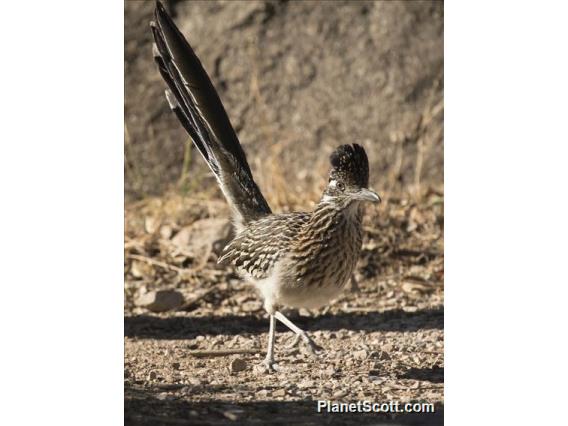Greater Roadrunner (Geococcyx californianus)

Greater Roadrunner (Geococcyx californianus)
×


Greater Roadrunner (Geococcyx californianus)
About Greater Roadrunner (Geococcyx californianus)
- Kingdom: Animals
- Phylum: Chordates
- Class: Birds
- Order: Cuckoos
- Family: Cuckoos
The greater roadrunner is a long-legged bird in the cuckoo family, Cuculidae, from the Aridoamerica region in the Southwestern United States and Mexico. The scientific name means "Californian earth-cuckoo". Along with the lesser roadrunner, it is one of two species in the genus Geococcyx. This roadrunner is also known as the chaparral cock, ground cuckoo, and snake killer.
Source: Wikipedia
Visits
-
-
-
2013-04-15
Balcones Canyonlands NWR--Refuge HQ (Travis Co.), United States of America -
2014-02-22
Panoche Valley, United States of America -
2014-05-09
Rodeo, United States of America -
-
-



